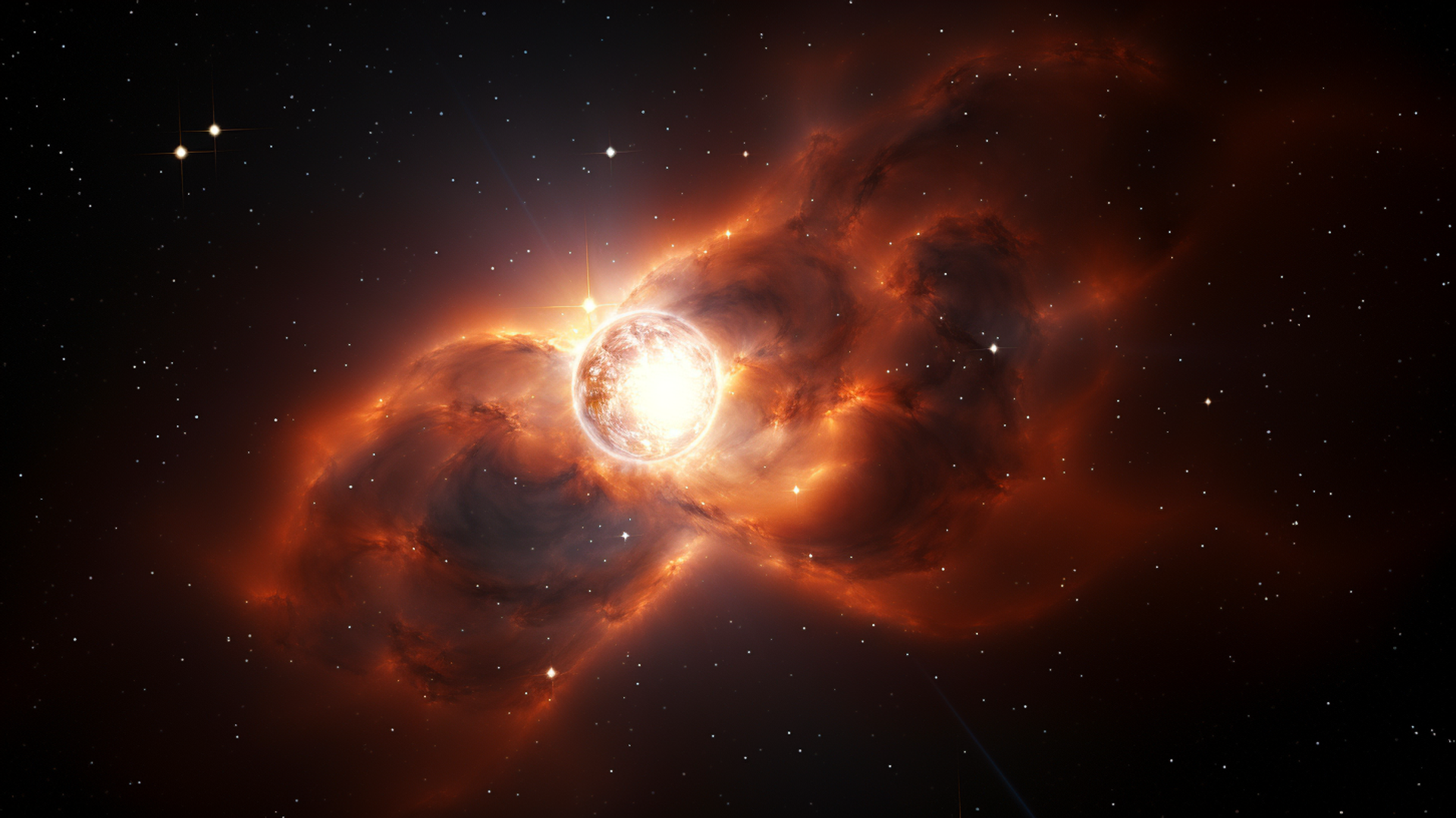https://sputnikglobe.com/20230824/astronomers-spot-young-star-emitting-gamma-rays-giving-clues-to-early-solar-systems-1112834738.html
Astronomers Spot Young Star Emitting Gamma-Rays, Giving Clues to Early Solar Systems
Astronomers Spot Young Star Emitting Gamma-Rays, Giving Clues to Early Solar Systems
Sputnik International
Scientists have found the first observable evidence of a young star emitting gamma radiation, solving their mysterious origin and providing clues to our solar system's formation.
2023-08-24T03:30+0000
2023-08-24T03:30+0000
2023-08-24T03:29+0000
beyond politics
argentina
spain
royal astronomical society
earth
science & tech
fermi gamma-ray space telescope
solar system
gamma ray
gamma-ray burst
https://cdn1.img.sputnikglobe.com/img/07e7/08/18/1112834507_0:0:1451:816_1920x0_80_0_0_0c7d5b97d63451cba7cd13eb3c6ea5ff.png
Scientists from Argentina and Spain have found observable evidence of a young star emitting gamma radiation for the very first time.The astronomers used the Fermi satellite telescope, which sees the universe in gamma-rays and observed a T. Tauri star emitting blasts of gamma radiation, which they note is the “most energetic region of the electromagnetic spectrum.” T. Tauri stars are still in the process of being formed, and have a relatively low mass and disk of gas and dust orbiting around them, which can act as a birthing ground for planets. The celestial beings are also extremely volatile.The Fermi satellite telescope used in the study has been continuously searching space since it launched in 2008. However, around 30% of the gamma-rays detected by the telescope have not been attributed to a source yet, including the rays now attributed to the young star observed in the study.The team noted three unidentified gamma sources that were observed in a region of space called NGC 2071, where at least 58 T. Tauri stars have been discovered. The study claims that no other sources of gamma radiation are thought to be in the area.The study authors say one possible explanation is that gamma-rays are produced sporadically when T. Tauri stars create “megaflares.”Similar to our sun’s solar flares but exponentially larger and more powerful, they are formed when magnetic energy gets stored in the star’s atmosphere and then released in a powerful blast of electromagnetic energy.The authors hypothesize it may also explain the origin of other previously unknown gamma-ray sources, as well as provide clues into the early formation of solar systems.The study was published on Wednesday in the Monthly Notices of the Royal Astronomical Society.
argentina
spain
earth
Sputnik International
feedback@sputniknews.com
+74956456601
MIA „Rossiya Segodnya“
2023
News
en_EN
Sputnik International
feedback@sputniknews.com
+74956456601
MIA „Rossiya Segodnya“
Sputnik International
feedback@sputniknews.com
+74956456601
MIA „Rossiya Segodnya“
t tauri stars, gamma radiation, early solar system, how were planets formed
t tauri stars, gamma radiation, early solar system, how were planets formed
Astronomers Spot Young Star Emitting Gamma-Rays, Giving Clues to Early Solar Systems
T. Tauri stars are newly formed and are known for their periodic and random fluctuations in brightness. Less than 10 million years old, they do not yet have nuclear fusion occurring in their core. The first discovered, also named T. Tauri, was found in the Taurus constellation.
Scientists from Argentina and Spain have found observable evidence of a young star emitting gamma radiation for the very first time.
The astronomers used the Fermi satellite telescope, which sees the universe in gamma-rays and observed a T. Tauri star emitting blasts of gamma radiation, which they note is the “most energetic region of the electromagnetic spectrum.”
T. Tauri stars are still in the process of being formed, and have a relatively low mass and disk of gas and dust orbiting around them, which can act as a birthing ground for planets. The celestial beings are also extremely volatile.
“This observational evidence is essential for understanding the origin of sources that have previously remained unknown for more than a decade, which is unquestionably a step forward in astronomy,” study lead and astronomer at the Universidad Nacional de La Plata, Agostina Filócomo said in a statement. “It is also critical to comprehend the processes that occur during the early phases of star formation: if a T Tauri star produces gamma-ray radiation, it will affect the gas conditions of the protoplanetary disk and, consequently, the evolution of planet formation.”
The Fermi satellite telescope used in the study has been continuously searching space since it launched in 2008. However, around 30% of the gamma-rays detected by the telescope have not been attributed to a source yet, including the rays now attributed to the young star observed in the study.
The team noted three unidentified gamma sources that were observed in a region of space called NGC 2071, where at least 58 T. Tauri stars have been discovered. The study claims that no other sources of gamma radiation are thought to be in the area.
The study authors say one possible explanation is that gamma-rays are produced sporadically when T. Tauri stars create “megaflares.”
Similar to our sun’s solar flares but exponentially larger and more powerful, they are formed when magnetic energy gets stored in the star’s atmosphere and then released in a powerful blast of electromagnetic energy.
The authors hypothesize it may also explain the origin of other previously unknown gamma-ray sources, as well as provide clues into the early formation of solar systems.
"The discovery of this phenomenon serves to understand how not only the sun but also our home planet, Earth, were formed and evolved," Filócomo said.


